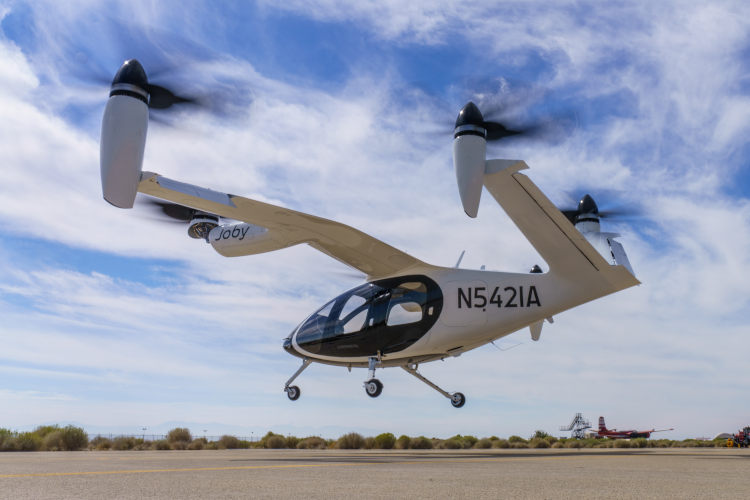The transformative, disruptive and historic idea of the eVTOL (electric vertical take-off and landing ) aircraft has the potential to jolt both the commercial and private aviation industries into the future. With this idea, as with most disruptive technologies, there are associated challenges and issues on the (flight) path to a commercial reality.
A few weeks ago we looked at the leading eVTOL aircraft that are in development. They offer the potential to revolutionize urban transportation and reduce congestion and emissions. However, before eVTOLs can enter commercial service on a large scale, several key issues and challenges must be addressed, including:

Battery Technology and Energy Density: One of the most critical challenges facing eVTOLs is the limitation of current battery technology. To achieve the necessary range and payload capacity for commercial viability, eVTOLs require high-energy-density batteries that are both lightweight and long-lasting. Advancements in battery technology are essential to overcome this challenge. The current crop of aircraft offer ranges from just 30 miles to about 150 miles – just like electric cars, the actual range will vary depending on temperature, weather and load factors.
Range and Endurance: Related to battery technology, commercial eVTOLs need to offer sufficient range and endurance to be practical for urban and regional transportation. Extending the range while maintaining safety and performance is a significant hurdle. Manufacturers must balance the need for longer flight times with the weight constraints imposed by batteries.
Regulatory Approval: The aviation industry is heavily regulated, and eVTOLs are no exception. Developing a regulatory framework that ensures the safety of passengers and the public while accommodating the unique characteristics of eVTOLs is a complex task. Collaboration between aviation authorities, manufacturers, and other stakeholders is ongoing and crucial to establish appropriate rules and standards. The leading eVTOL developers are hoping the Federal Aviation Administration will certify their aircraft for commercial flights starting in 2025.
Infrastructure: Creating the necessary infrastructure for eVTOL operations is a significant challenge. This includes developing landing pads, charging stations, and air traffic management systems capable of handling the increased volume of aerial traffic. Coordinating with urban planners and local governments is essential to ensure that the infrastructure is in place and integrated seamlessly into urban environments.
Charging and Infrastructure Costs: Developing a network of charging stations and maintenance facilities can be expensive. Determining a sustainable business model to cover these costs while keeping ticket prices competitive is a challenge that operators and investors must tackle.
Affordability: For eVTOLs to become a viable mode of transportation for the masses, they must be affordable. Reducing manufacturing costs and optimizing operational efficiency will be essential to make eVTOL travel accessible to a broad range of passengers.
Noise Pollution: EVTOLs must address noise pollution concerns, especially in densely populated urban areas. While they produce significantly less noise than standard helicopters, even quieter propulsion systems and efficient noise-reducing technologies may be needed to minimize disruptions to communities.
Safety and Redundancy: Ensuring the safety of eVTOL operations is paramount. Manufacturers must incorporate redundant systems and fail-safes to mitigate potential failures. Additionally, pilot training and maintenance procedures should meet stringent safety standards. This will be a key area of focus for regulatory authorities.
Integration with Existing Transportation: EVTOLs should complement existing transportation systems seamlessly. Ensuring connectivity with public and private transit options, as well as integrating eVTOL operations into urban mobility planning, is vital for their success.
Public Perception and Acceptance: Acceptance of eVTOLs by the public is essential. Manufacturers and operators must build trust in the safety and reliability of these aircraft through transparent communication and education.
Pilot Training and Availability. Aviation already faces a pilot shortage. Some forecasts for the number of eVTOLs project thousands of new aircraft. There will be challenges in the eVTOL industry due to the need for specialized training and a limited pool of qualified pilots. Autonomy will play a crucial role by reducing the pilot's workload and enabling a broader range of individuals to operate eVTOLs safely. However, regulatory hurdles and public trust must be addressed before fully autonomous eVTOL flights become widespread. Gradual integration of autonomy, coupled with rigorous safety standards, will likely be the path toward solving the pilot availability issue in the long term.
In conclusion, while eVTOLs hold immense promise for transforming transportation - particularly urban transportation - they face significant hurdles before they can enter commercial service on a large scale. Addressing issues related to battery technology, infrastructure, regulation, safety, pilots, affordability, and public perception is essential for the successful integration of eVTOLs into our transportation ecosystem. Collaboration among industry stakeholders, regulatory bodies, and communities is already happening to overcome these challenges and realizing the full potential of eVTOL technology.

